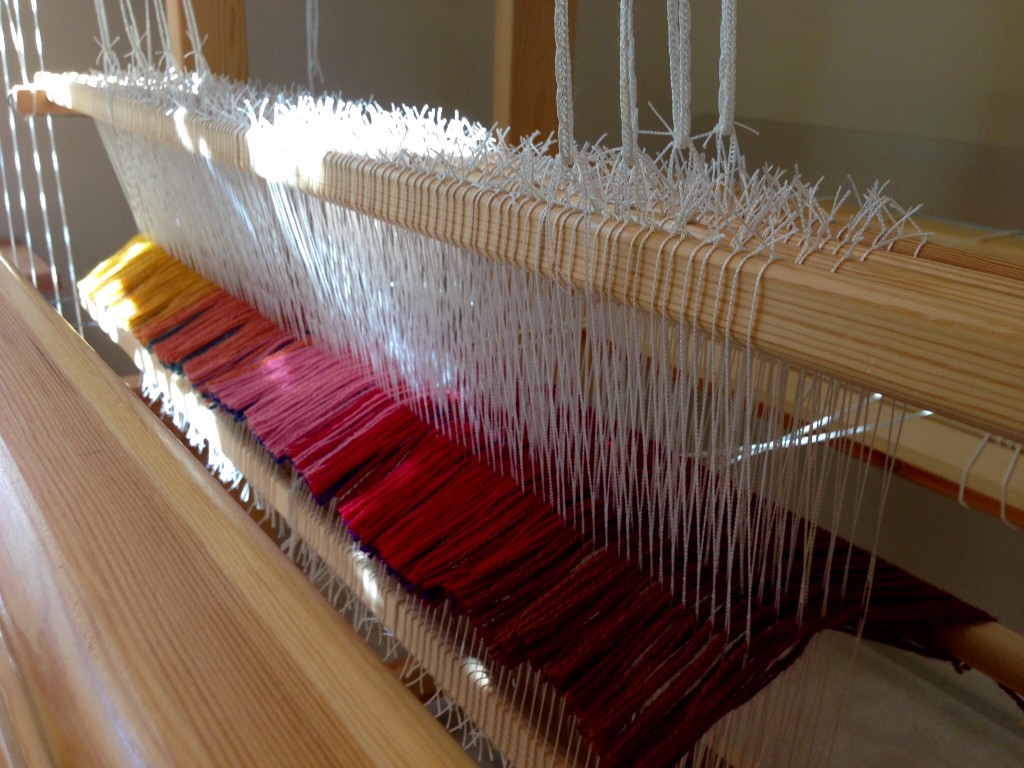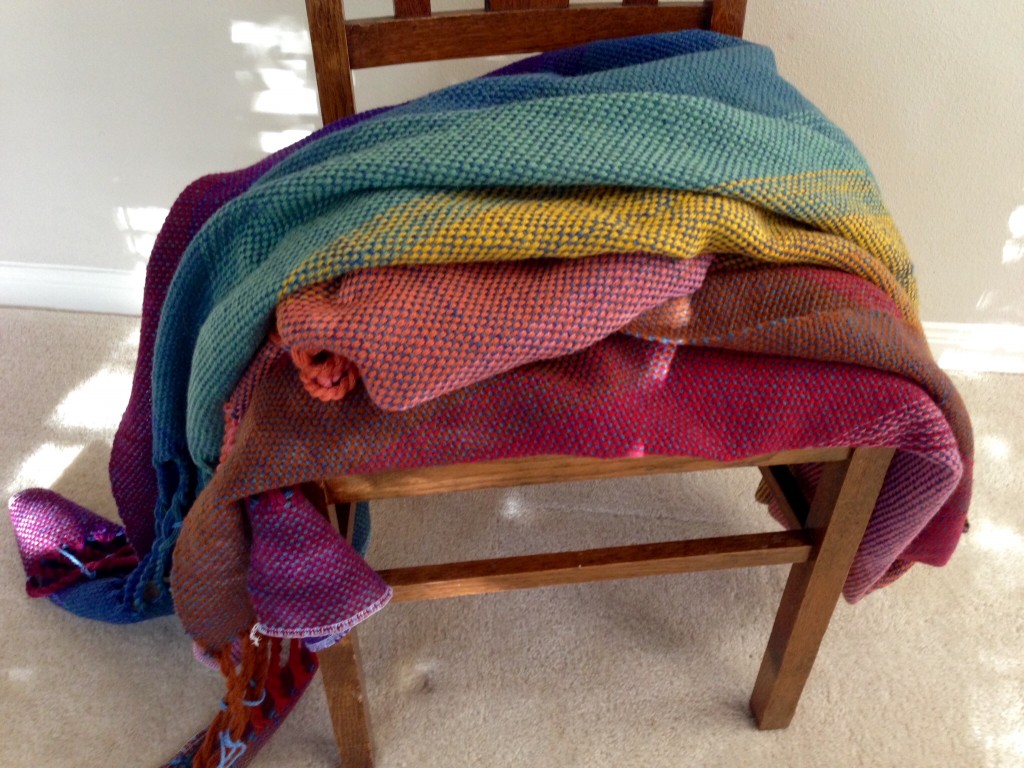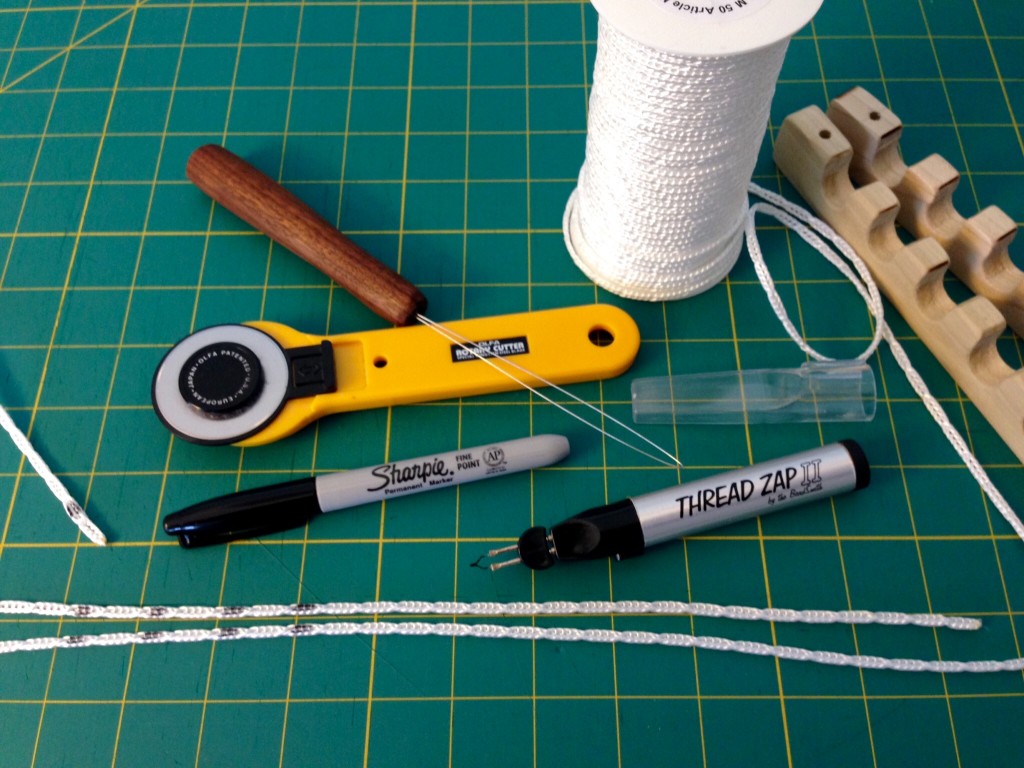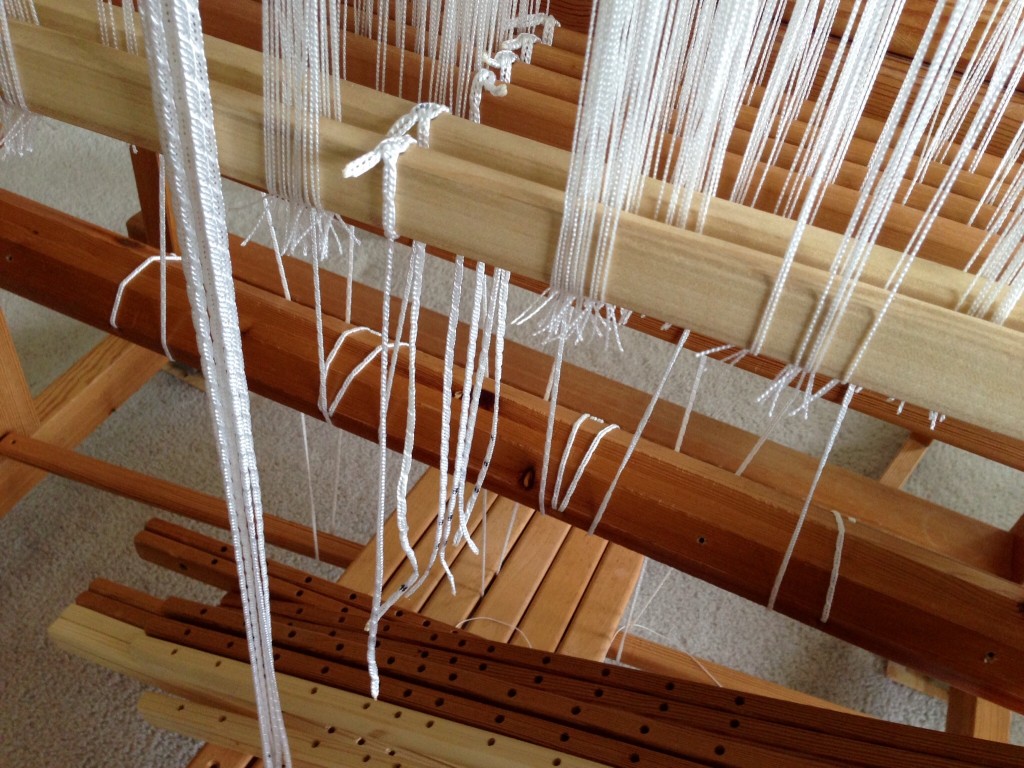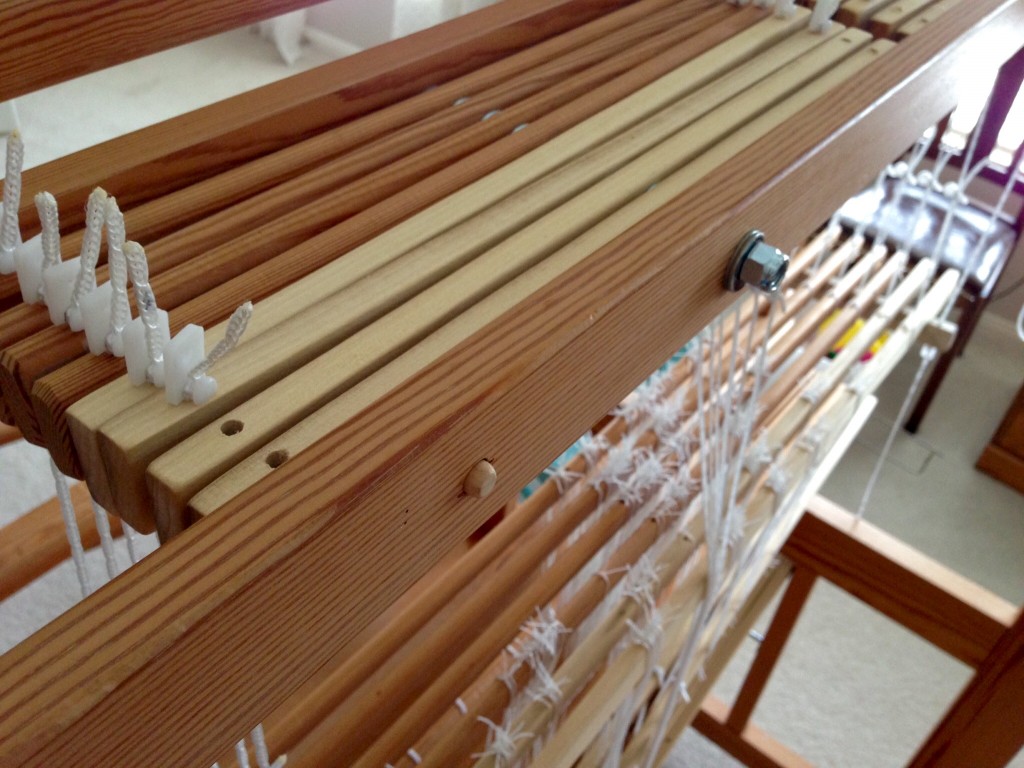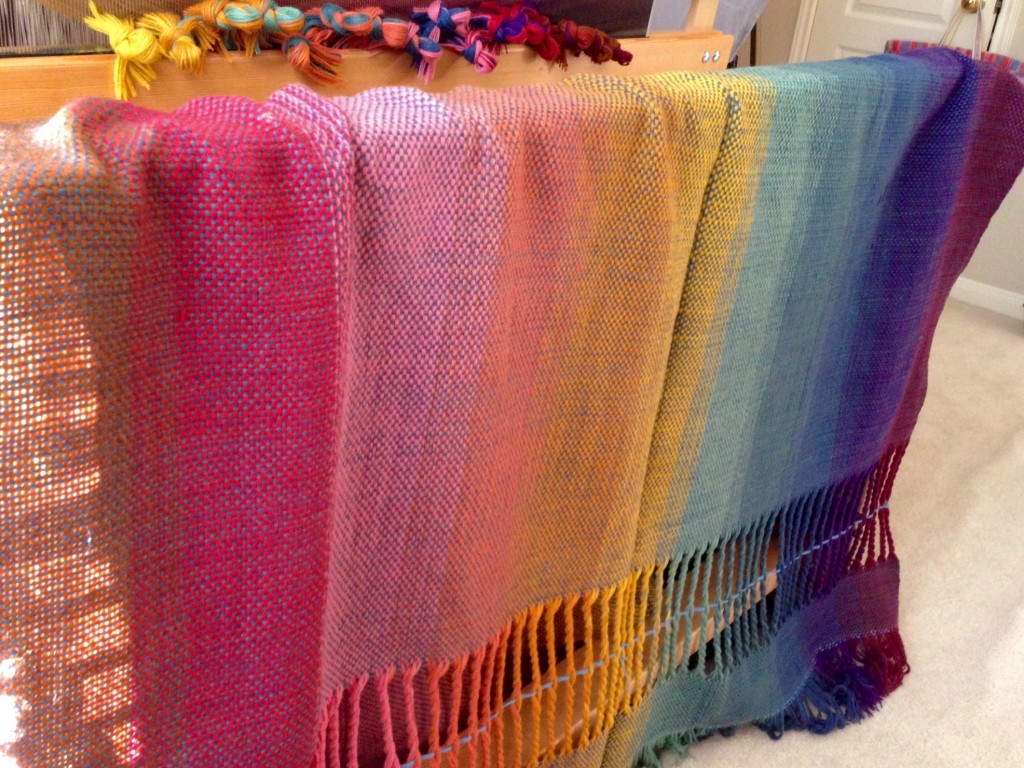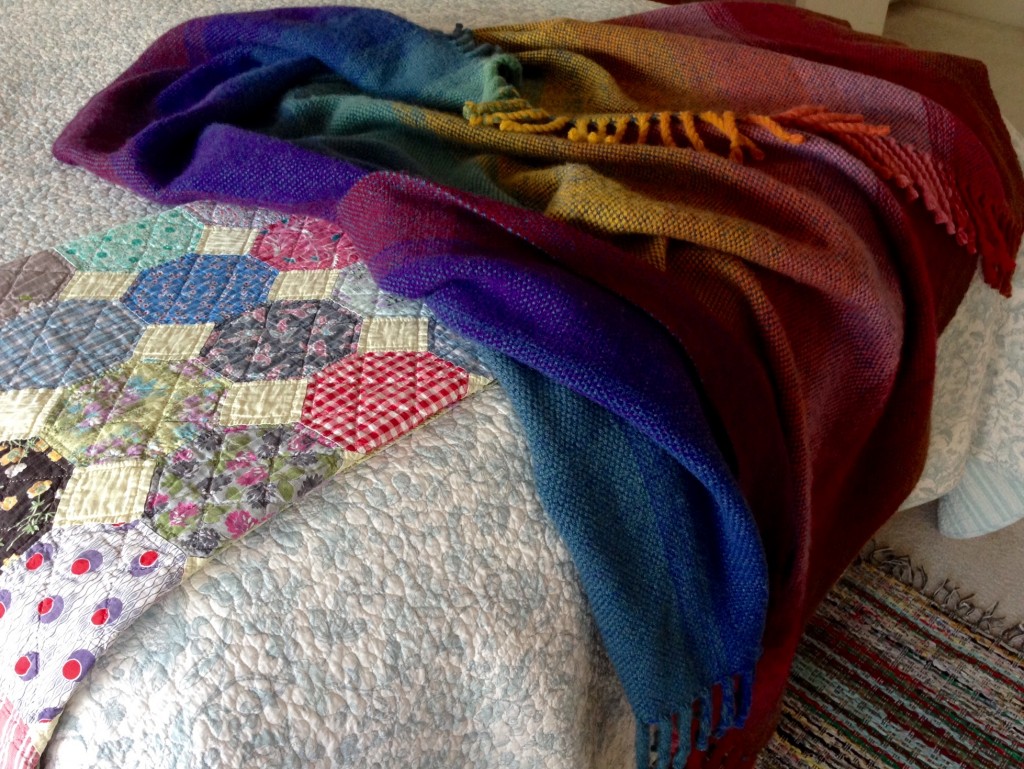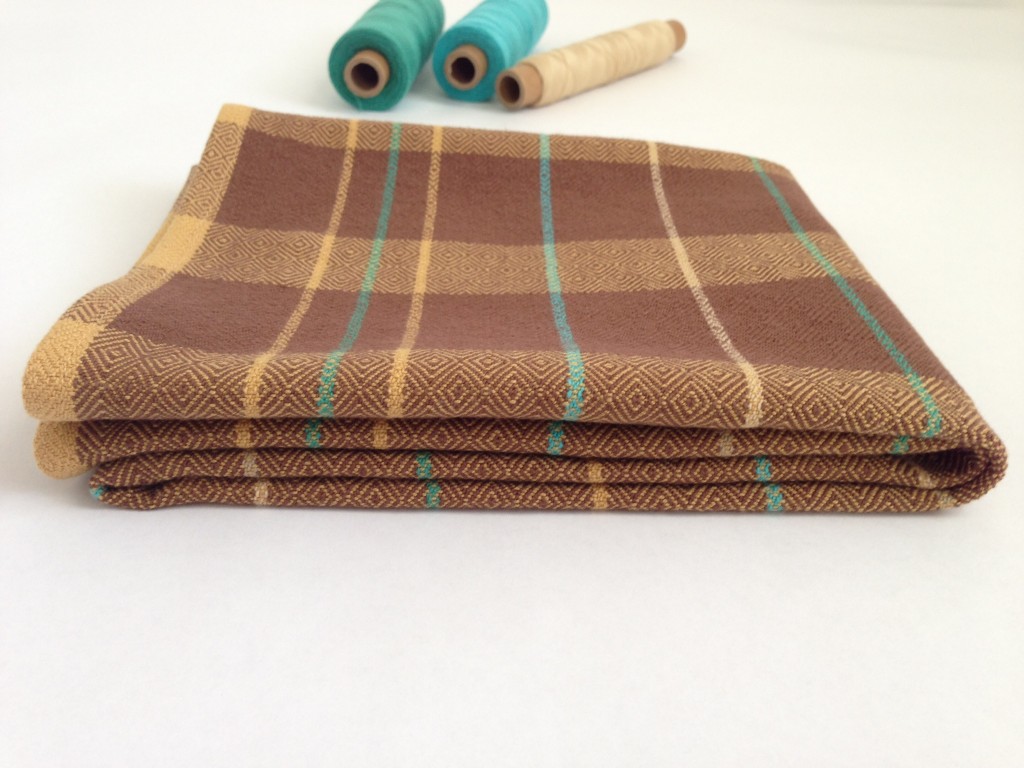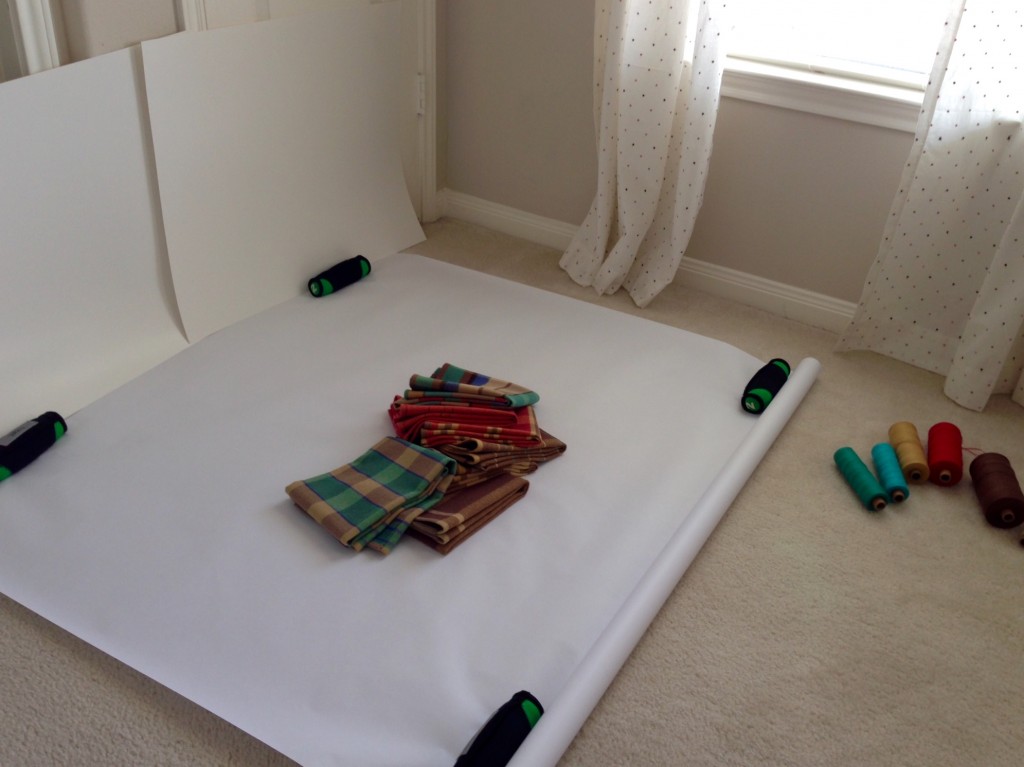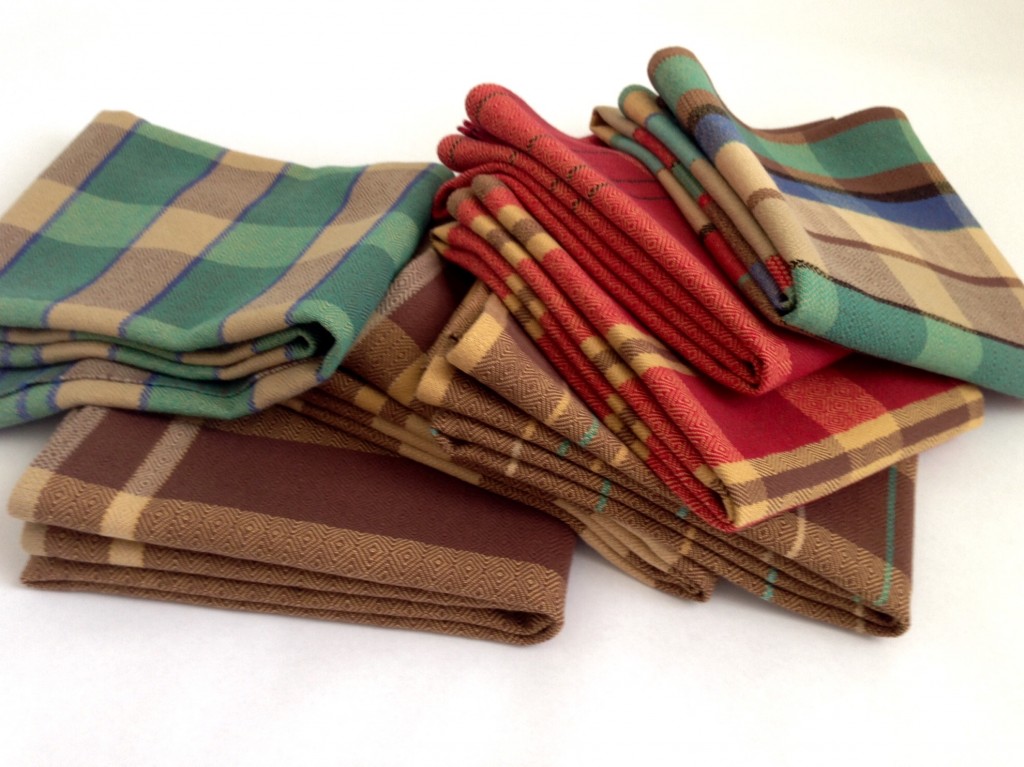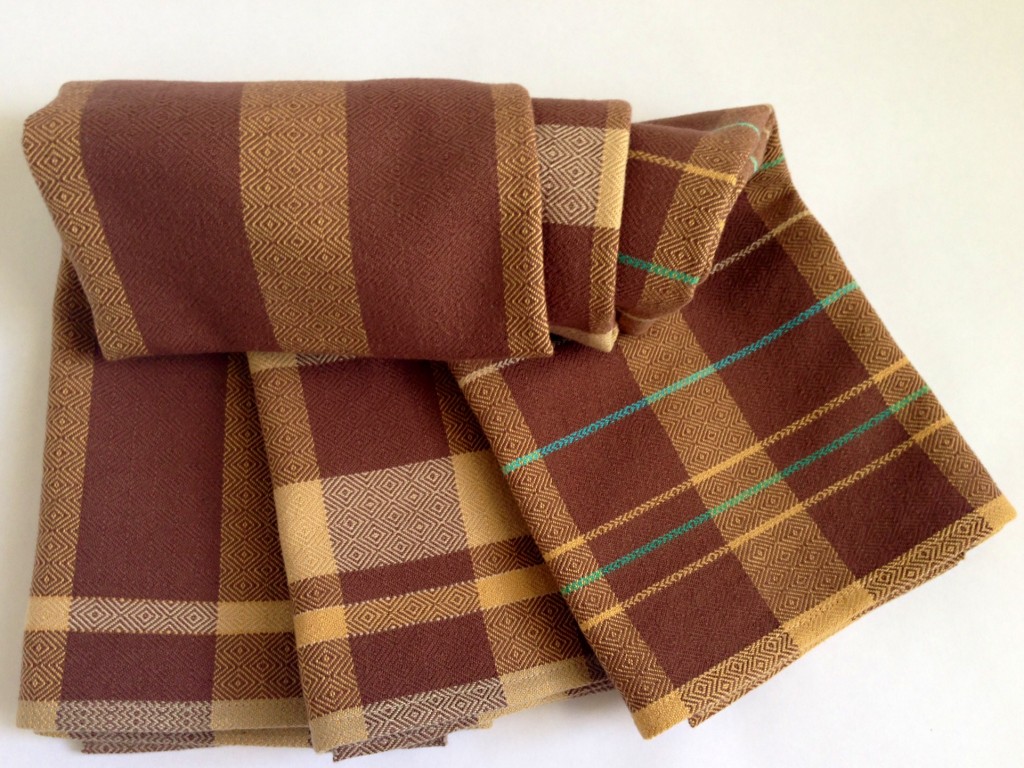The softer, the better. We all know that wool can be scratchy, but we like wool because of its warmth. And, as a fiber for weaving, wool is easy to work with because of its elasticity. Wet finishing reduces the scratchiness, making it possible to end up with a comfy wool blanket. A soft and gentle blanket.
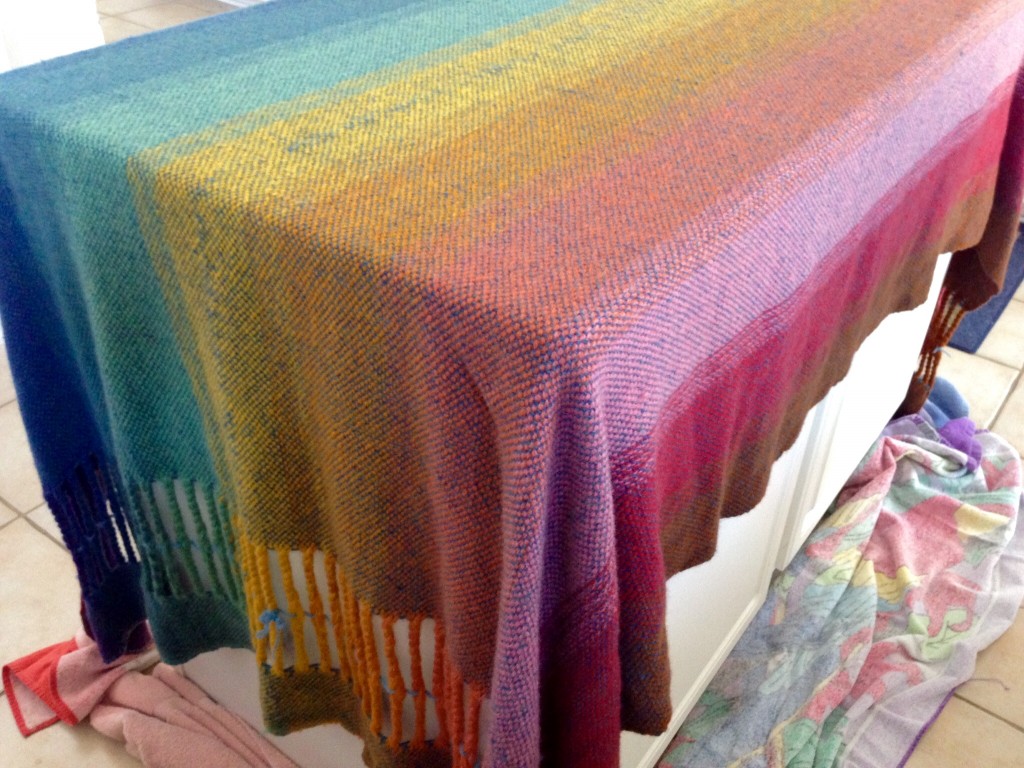
Gentleness is stronger than we think. A lullaby has the power to quiet a crying baby. My son once had a first grade teacher who could still a classroom of seven- and eight-year-olds with a whisper. And the gentle touch of a friend can speak louder than words.
We influence far more people through kindness, gentleness, and patience than we ever will with persuasive arguments. Like a soft and comfy wool blanket, gentleness is strong enough to warm someone in the cold.
~ It’s time for segment three in the Wool Blanket Finishing series. ~
You can learn about the previous video segments in Quiet Friday: Wool Blanket Finishing, or you can view them here:
1. Twisting Fringe on the Loom
2. Wool Blanket Before Wet Finishing
Please return next week for the fourth video segment, Wool Blanket Final Finishing, to find out what happens to the fringe!
May your gentle influence increase.
Warmly,
Karen

